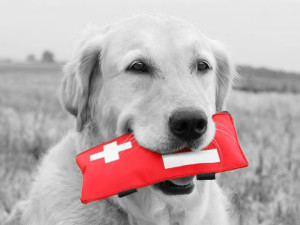What would you do if your pet collapsed? A pet could collapse due to choking, trauma or electrocution. Cardiopulmonary resuscitation (CPR) is a life-saving procedure which is performed when the victim’s heart beat and breathing have stopped. CPR can be performed on pets as well—as long as you know a few basic rules.

How to do CPR on pets?
Step 1: Call a veterinarian immediately or get someone drive you to a veterinary clinic. By the time, you can check for breathing and pulses and start the CPR process either at your home or at the backseat of your car. Place the pet on a flat surface, with the left side up and the right side down.
Step 2: Cup your hands and place one palm on either side of the pet’s heart. Compress the chest for one-quarter to one-third of the chest width at a rate of 80 compressions per minute for dogs more than 30 pounds. For dogs that weigh less than 30 pound, do it for 100 times a minute while for cats, compression rate should be 120 beats per minute.
Step 3: Before you give artificial respiration, close the pet’s mouth and breathe into the pet’s nose one time for every five compressions. If two persons are available at the time, give artificial respiration once for every two compressions are done.
Step 4: Continue performing CPR on Pet until the pet begins to breathe and has a steady pulse or a veterinarian attends to your pet.
Pet owners who attend CPR classes can prepare themselves to react quickly in emergency situations. Remember, you can buy time by performing CPR till you get to a vet.

